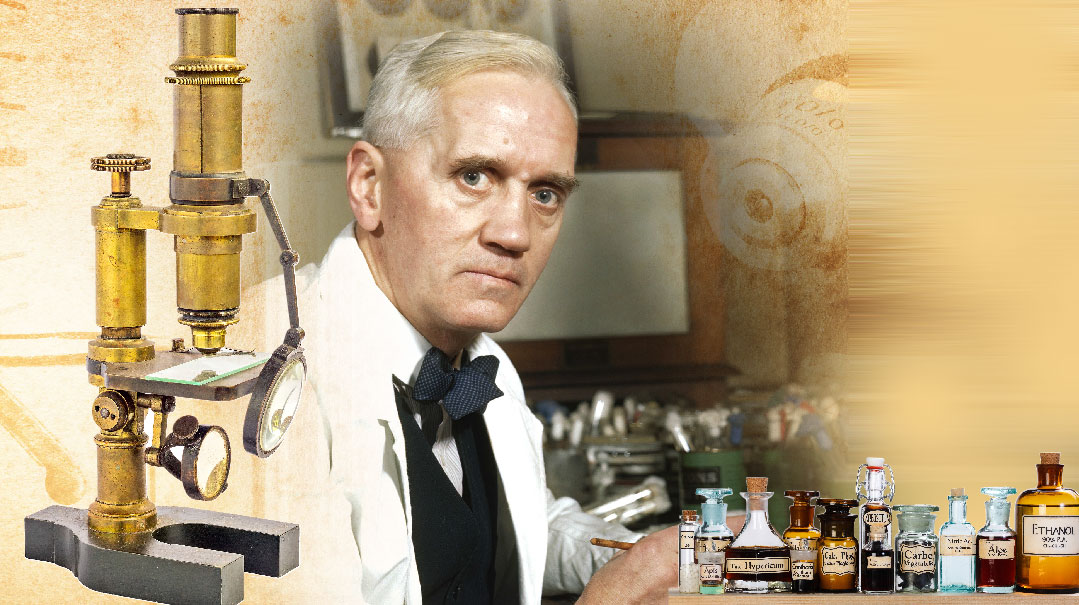A Discovery That Changed the World
| November 4, 2020How were antibiotics discovered? Who were the people involved in developing this world-changing, lifesaving medication? Let’s find out

Lochfield Farm, Darvel, Ayrshire, Scotland. August 6, 1881
The wail of a newborn infant pierced the air. Little Alexander Fleming made his grand entrance into the world, joining six older siblings.
Growing up in southwestern Scotland on his father’s farm, Alexander was an inquisitive little fellow with a sharp eye and keen observation. He loved and appreciated the world of nature, which was all around him, and explored with endless curiosity.
When Alexander was 14, he moved to London to join his big brother, Thomas. Thomas was an oculist (an old-fashioned word for a kind of eye doctor). Alexander finished his basic schooling there, in London. When he was 20 years old, Alexander began medical school.
England, 1908
Eight years later, the budding doctor won a gold medal at the University of London: Top Medical Student. Like many top medical students, Alexander Fleming planned to be a surgeon, a very prestigious kind of doctor. But Hashem had other plans.
“Alexander,” Thomas said one evening as the brothers read in the drawing room, “I heard there is a temporary position open at St. Mary’s Hospital. Are you interested?”
His younger brother’s eyes flickered. “Tell me more, Thomas,” Alexander said.
“In the laboratories. As I understood, they spoke of the laboratories in the Inoculation Department.”
Alexander watched the fire playing in the hearth. “And you see me succeeding there, Thomas?”
“Quite.” Thomas smiled at his brother. “Anyhow, it is but a temporary position. If you shan’t like it, you may move on shortly.”
“Quite true,” Alexander agreed.
In those days, the field of bacteriology (the study of bacteria) was a new one. In his new, temporary position, Alexander Fleming met and befriended Sir Almroth Edward Wright (1861–1947), a bacteriologist and immunologist. Fleming was interested in Wright’s work on vaccines, which seemed to promise a revolution in the world of medical treatment. Fleming stayed there for a year, and then left to establish a private practice as a medical doctor and researcher. But he would eventually return to his first post at the Inoculation Department.
France, 1914
During World War I, Fleming joined the war effort with the Royal Army Medical Corps. Together with his teacher and friend, Sir Almroth Edward Wright, Fleming worked as a bacteriologist in a military hospital in France. There he studied the soldiers’ wounds and the inevitable infections as he tried to treat them. Fleming was saddened by the many wounded soldiers he saw develop infections and then die; there was no good treatment available to treat infections.
Oops! We could not locate your form.






